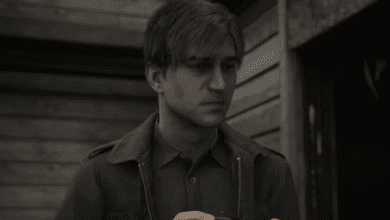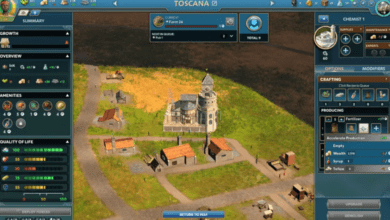Frostpunk 2 Review: A Bold Evolution in City-Building Strategy
Sequels often walk the fine line between innovation and sticking to a winning formula, but Frostpunk 2 boldly steps beyond its predecessor. Set in the same bone-chilling, icy wasteland where humanity’s survival hangs by a thread, this game doesn’t just rehash old ideas. Instead, it reinvents its own city-building mechanics, political systems, and resource management, offering a fresh yet challenging experience for players. This in-depth review explores how Frostpunk 2 rises above the typical city-building game while addressing some quirks that might frustrate even the most seasoned gamers.

A Chilling Yet Refreshing New Take on City Building
While the original Frostpunk captivated players with its desperate struggle for survival, Frostpunk 2 takes a daring leap forward, bringing new twists to its gameplay. Sure, it’s still about scraping by in a frozen post-apocalyptic world, but this time around, everything feels revamped. Building placement, resource management, and heating mechanics have all been reworked, providing a fresh spin that keeps players on their toes.
One of the most compelling changes is the game’s political system, which mirrors the dynamics of a representative democracy. As the leader of New London, your decisions aren’t just about keeping the lights on. You’re constantly negotiating with factions, balancing demands, and navigating morally ambiguous choices. It’s a brilliant simulation of quid-pro-quo governance that adds layers of complexity to an already intricate game. While the zoomed-out perspective of Frostpunk 2 can make it harder to connect with individual citizens compared to the first game, the political tensions keep the emotional stakes high.
The Atmosphere of Dread: More Than Just Snow and Ice
Atmosphere is everything in a survival game, and Frostpunk 2 nails this aspect. The bone-chilling weather effects and haunting musical score set the tone perfectly. As the city grows and tension mounts, the music swells, amplifying the pressure you feel as a leader.

Visually, the snowy wastelands remain as oppressive as ever. Mountains and cliffs break up the otherwise uniform frozen landscape, giving each area its own visual identity. But the real artistry comes as your city evolves. As you build intricate districts and connect them with power lines, the stark white snow gives way to a more colourful yet tension-filled cityscape. Power lines even pulse red when tensions run high, adding to the visual drama.
That said, the lack of pedestrians walking through the streets, something that made the original Frostpunk feel so alive, might leave returning players feeling a bit cold. Yes, citizens pop up to comment on your decisions, and an announcer occasionally cracks a joke over the loudspeaker, but it can still feel a bit desolate. However, this might just be a small price to pay for the larger, more intricate world the game offers.
Story Mode and Sandbox Mode: A Tale of Two Cities
The game splits its experience between a five-chapter Story mode and the more open-ended Utopia Builder mode. The Story mode is a solid introduction, offering a structured path that connects the events of the first game with this new chapter in humanity’s struggle. However, it’s light on plot compared to the rich political and social drama happening in the sandbox.
Utopia Builder, on the other hand, is where Frostpunk 2 really shines. In this mode, you’re given the freedom to build and manage your city with fewer narrative constraints, focusing on the strategic intricacies of multi-tile districts for housing, food production, fuel extraction, and more. The system of adjacency bonuses adds an additional layer of complexity, forcing you to think carefully about where and how you build.

However, some design choices can feel like unnecessary busywork. The frostbreaking system, where you have to clear batches of frozen tiles before constructing anything, slows down your progress in a way that feels more tedious than strategic. Additionally, the inability to reposition individual tiles without demolishing entire districts can lead to frustration. Thankfully, the game compensates by refunding all your resources when you do demolish, so the only thing lost is your time.
The Political Landscape: Balancing Factions and Trust
One of the most dynamic aspects of Frostpunk 2 is its faction and government systems. You’re not just managing resources here you’re also playing political chess with various groups of citizens, each with their own demands and desires. It’s not enough to keep the city’s lights on; you must ensure that the different factions within your society don’t revolt or lose faith in your leadership.
A key aspect of governance in the game is the Council, made up of 100 representatives from various factions. The decisions made here can make or break your rule. Every vote is a gamble unless you’ve worked to lock in support ahead of time. And while it’s tempting to try and appease everyone, failure to do so can quickly lead to social collapse. Bribing factions with research advancements or heatstamps (the game’s version of currency) can sometimes smooth things over, but many decisions are non-negotiable. The balance between keeping your promises and pursuing your agenda creates a tense, often nail-biting experience.
Failing to maintain trust with your citizens can lead to riots, production shutdowns, and widespread tension. The system keeps you constantly on edge, knowing that one wrong move could lead to disaster. This makes for a thrilling dynamic, but it’s not without its challenges. Players who fail to keep an eye on their factions might find themselves ousted from power long before their city crumbles.
The Frostlands: Expanding Beyond New London
While most of your time is spent managing New London, there’s an entire world outside the city that demands attention. The Frostlands map, where your scouts explore for resources, colonies, and outposts, adds a layer of depth that wasn’t as fully fleshed out in the original Frostpunk. Connecting the resources you discover back to New London via roads and outposts is a satisfying way to ensure a steady stream of supplies, but it also introduces new challenges.
During Whiteout storms, the Frostlands map becomes inaccessible, forcing you to rely on stockpiled resources to keep your city warm and fed. These storms can last months, and if you haven’t been overproducing, you’re in for a tough time. The storms add an extra layer of strategy, pushing players to plan well ahead and ensure their city is self-sufficient in case of disaster.
One drawback is the difficulty in managing your factions while you’re off exploring. You can’t see what’s happening in New London when you’re zoomed out on the Frostlands map, and if something goes wrong, it can spiral out of control before you’re even aware of it.
Bugs and Performance Issues: Minor, But Present
Like many complex strategy games, Frostpunk 2 isn’t without its technical hiccups. Interface bugs, such as unresponsive dialogue options or overlapping buttons, can occasionally pull you out of the experience. The game also locks up briefly during autosaves, which is annoying but not game-breaking.
Performance can also dip as your city grows larger. The more people you have, the more strain the game seems to experience, leading to occasional slowdowns. It’s not enough to ruin the experience, but it’s something to keep in mind, especially during late-game scenarios where the population and city size grow exponentially.
The Verdict: A Must-Play for Strategy Fans
Frostpunk 2 is a triumph of both city-building mechanics and narrative depth. Its bold evolution from the original makes it a standout game in the genre, offering a unique blend of survival, politics, and strategy. While there are a few frustrating design quirks and technical issues, they pale in comparison to the complexity and enjoyment the game provides.
The story mode offers a solid, structured experience, but the real meat lies in Utopia Builder, where the endless possibilities and challenges keep you coming back for more. Whether you’re a fan of the original Frostpunk or a newcomer to the series, Frostpunk 2 is well worth your time. Its combination of high-stakes decisions, intricate city management, and political drama will keep you engaged for hours on end. Just be prepared to make some tough calls you’re not just building a city; you’re building a society.






